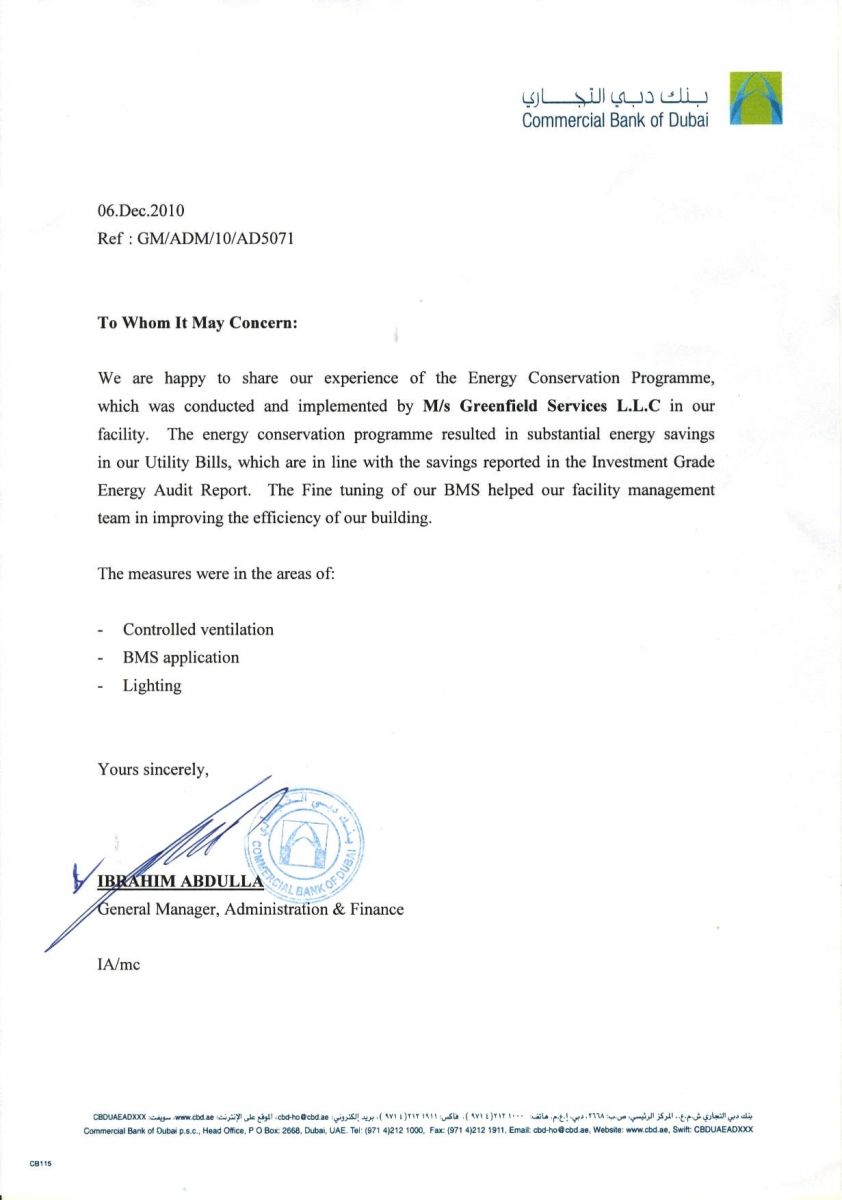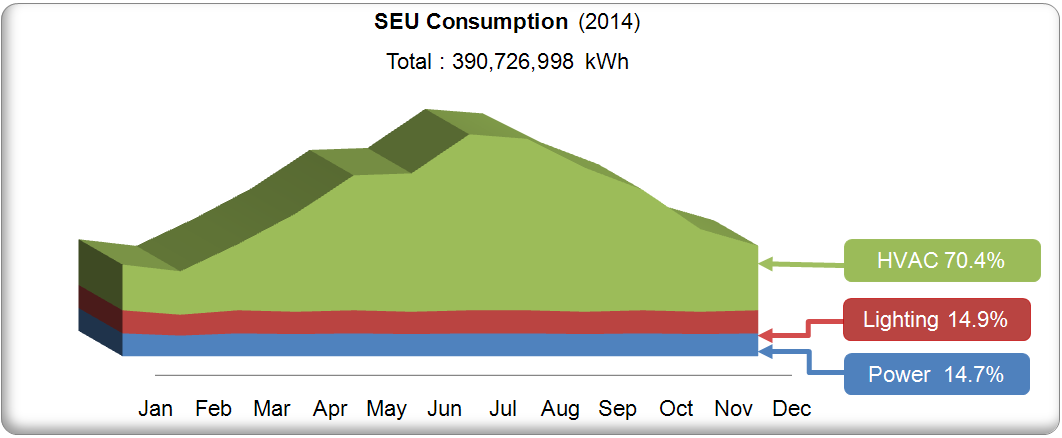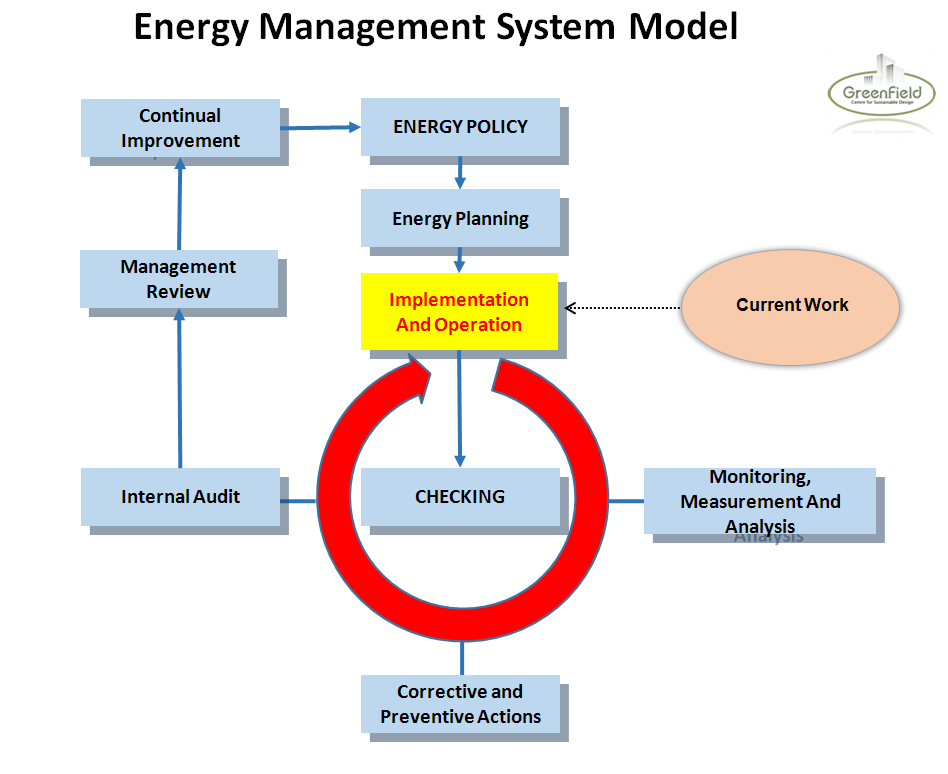
Energy Conservation & ISO 50001
Energy Auditing & Energy Conservation
Greenfield has over 30 years of experience in energy auditing and energy bench-marking of energy consumption of commercial buildings, offices, shopping malls, government institutions, hotels, residential buildings, different types of industries and more.
We are the pioneers of energy conservation in the UAE and continue to lead the way in energy optimization projects to this date. We have carried out in excess of One Hundred Energy Audits for existing buildings including some of the largest Hotel chains in the UAE, residential towers and shopping malls.
Our energy conservation programmes achieve on average energy savings between 13 to 30% of the annual energy bill with payback periods between 1 and 2 years.
Our process of Energy Auditing includes the following steps.
Energy consumption data gathering and analysis:
​It is the first step in the energy auditing and review process. In addition to the soft data collection from the engineering department we also log and measure the data as shown below.
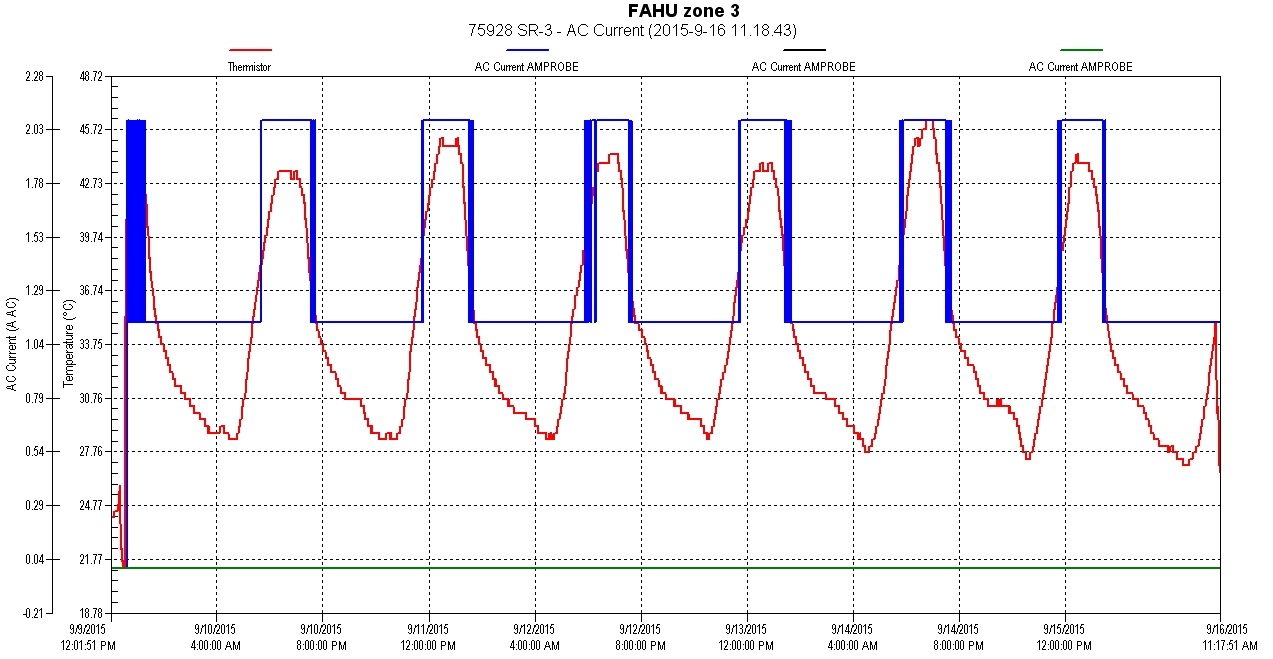
The data analysis leads to establishing an energy baseline consumption and identification of major energy users.
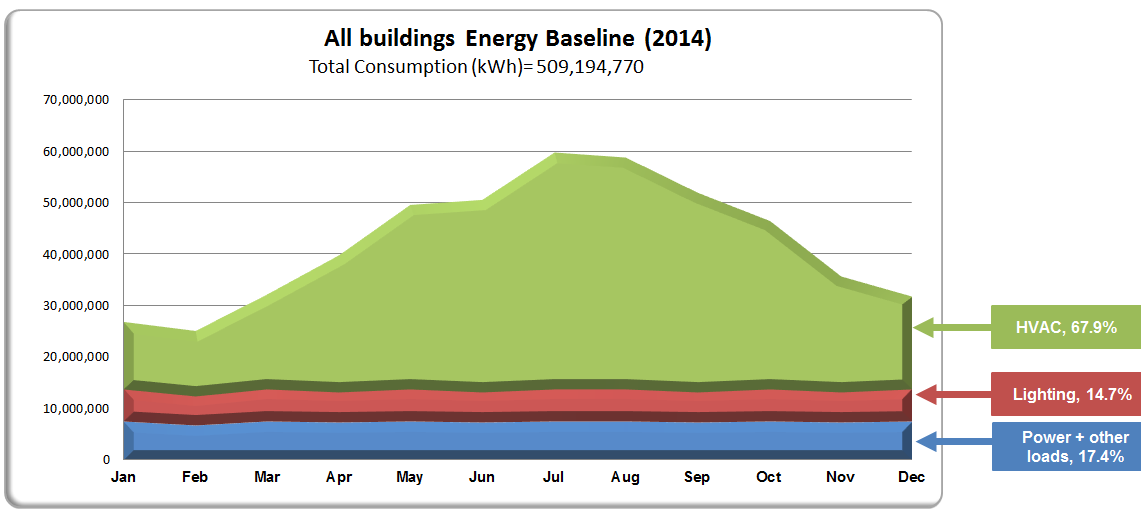
The sectoral distribution helps to identify the significant (major) energy consumers in the facility as shown below.
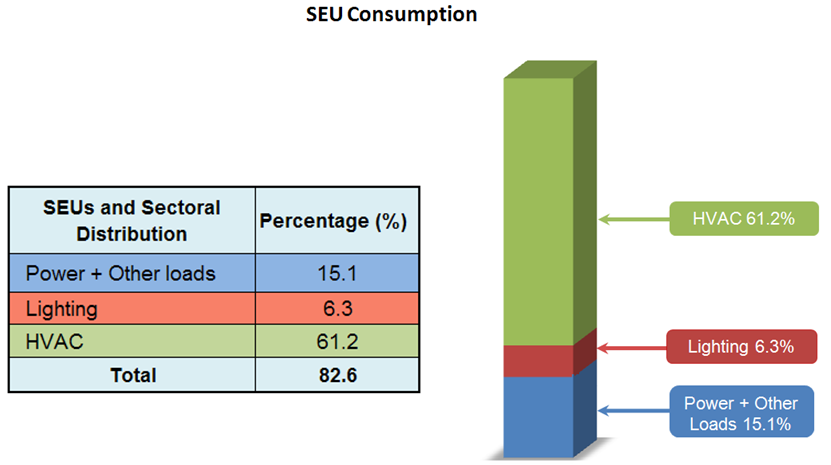
The energy consumption is further divided into more detailed sectors if needed, as shown below;
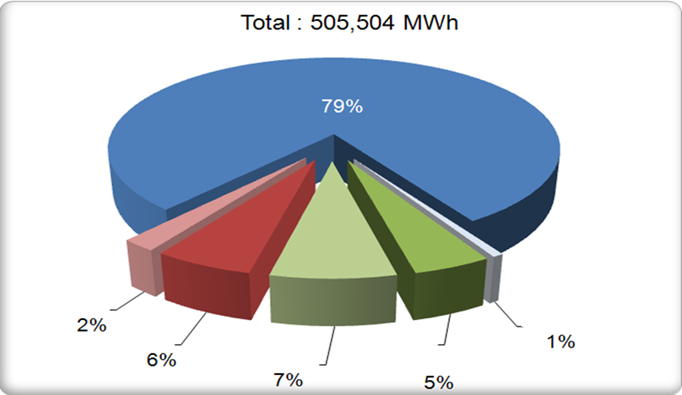
Financial Analysis& Projections:
To facilitate an informed decision by the CFO, various key indicators are worked out such as simple payback, cash flow, NPV, IRR, life cycle analysis and cost of not doing the project. Also the future consumption pattern is projected for easy comparison as shown below;
Economic Evaluation:
Methods for Evaluating Energy Cost Reduction Projects: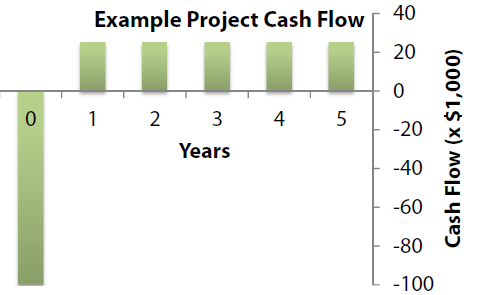
- Simple Payback
- Internal Rate of Return (IRR)
- Return on Investment (ROI)
- Net Present Value (NPV)
Life Cycle Cost Analysis:
- Consider total cost of ownership, not just upfront cost (operating cost usually significantly outweigh first cost.
- Pay more now, save year after year.
​
Cost of Doing Nothing
Once recommendations have been quantified the forgone savings start to accrue.
Previous Example: Initial Cost: AED 500,000
Annual savings: AED 125,000
Lifetime 20 years
Implementation of Energy Conservation Programme:
Greenfield’s outstanding experience in Energy Conservation extends beyond Energy Auditing and Benchmarking and into the actual implementation of the energy saving measures. For this, Greenfield combines the project management and technical skills to steer successfully an energy conservation programme through its entire process, which typically involves the following stages.
- Preparation of tenders
- Selection of suitable energy saving equipment and contractors
- Procurement of equipment
- Supervision of installation of equipment
- Supervision of commissioning of equipment
- Measurement and Verification of the energy savings
- Energy conservation project management
Management of Energy Conservation Project:
This is an additional service provided by Greenfield. Under this the energy conservation activities of the project are managed after implementation of energy saving measures. The minimum duration of this service is for one year and extending to any length of time as decided by the client.
The core activities of this service are to ensure that;
- All energy saving equipment are functional
- The energy saving is achieved continuously
- Fine tuning of these equipment is done as required
- Timely maintenance of these equipment is carried out
- Monthly report on energy performance improvement is produced.​
The graph below shows the effectiveness of the project management services for one of our projects
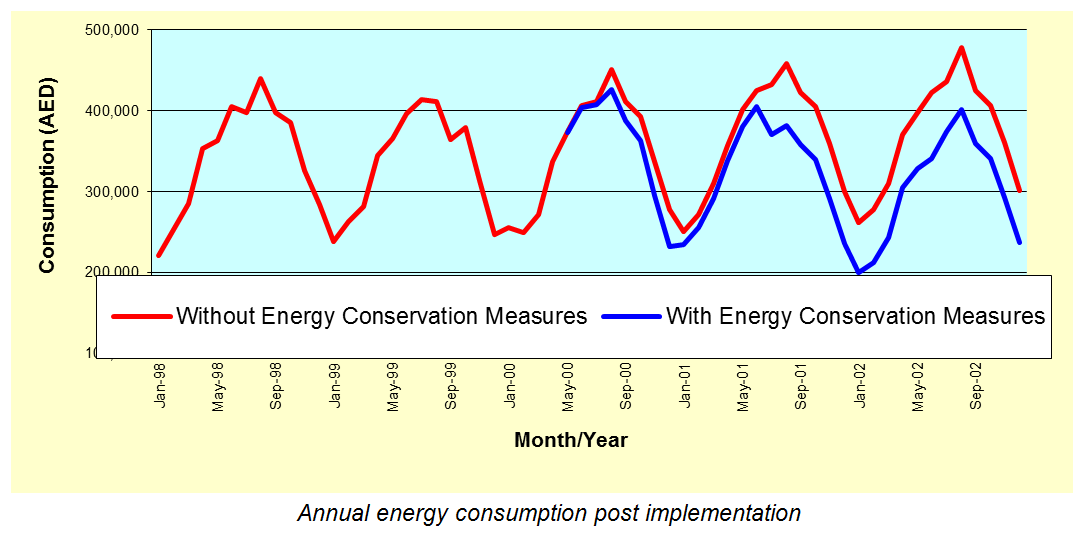
ISO 50001 Energy Management System (EnMS)
Apart from our Sustainability and Energy Conservation work, our services extend to the implementation of ISO 50001 Energy Management System (EnMS) for large organisations.
Contrary to ad-hoc energy conservation programs, an Energy Management System (EnMS) benefits from the inherent, continual improvement process of an EnMS that follows the Plan - Do - Check - Act or PDCA approach. The Figures below show the operating cycles of a typical energy conservation program versus an EnMS program.
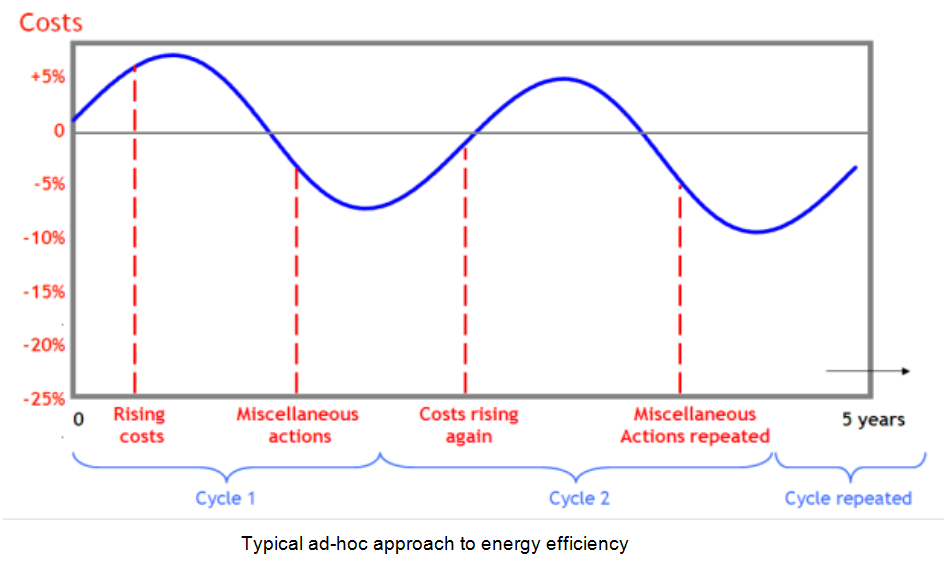
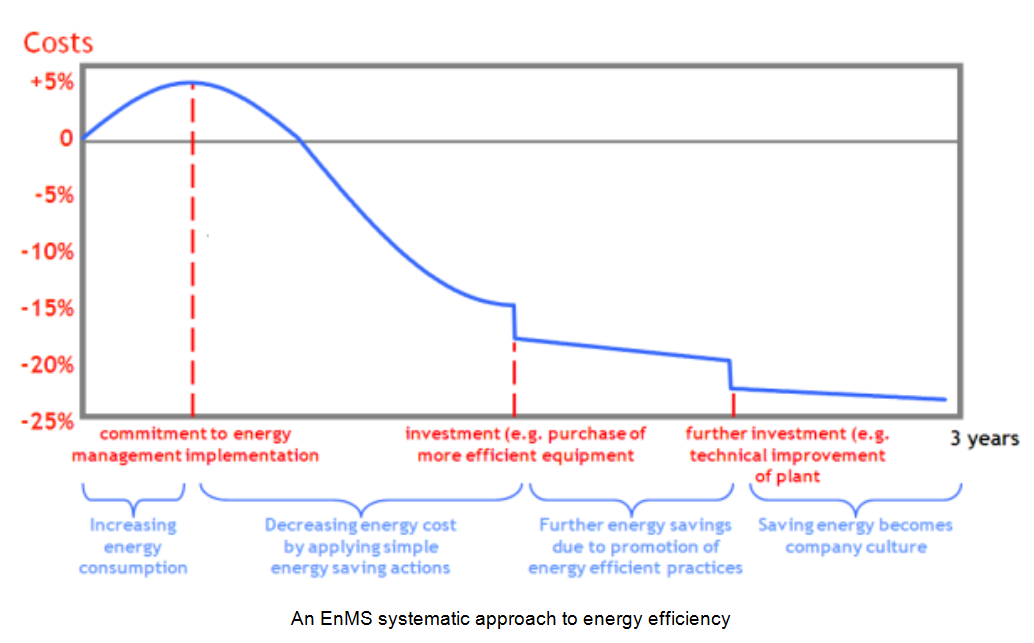
From the graphs above, ad-hoc energy conservation programs “oscillate” about some average energy performance value with only marginal energy improvements over time. On the contrary the EnMS approach allows for consistent energy improvements, year after year due to the inherent, continual improvement action in the ISO 50001 energy standard.
Greenfield has been preparing the EnMS program for ADNOC in Abu Dhabi, including various facilities such as Ruwais Housing Complex, ADNOC HQ, ATI Training Complex and many more.

The EnMS process in such projects follows the Plan – Do – Check – Act approach.
(Plan-Do-Check-Act, PDCA) which is shown below.
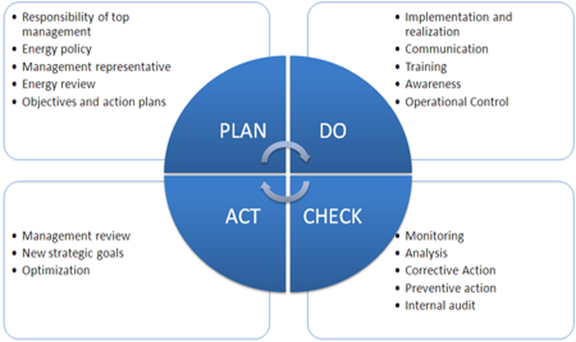
A typical energy management system model is depicted below.
Client Reference Letter
